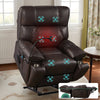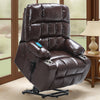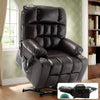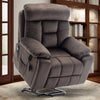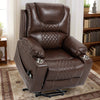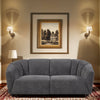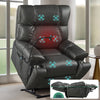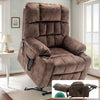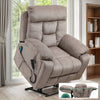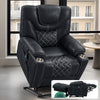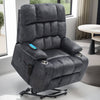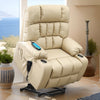High density foam is a strong, durable material used in many products. It's made from polyurethane and has a tight cell structure. This foam is heavier and firmer than regular foam. You'll often find it in furniture, mattresses, and car seats. High density foam offers better support and lasts longer than softer foams.
The Science Behind High Density Foams
Understanding Density in Foam Materials
Density in foam means how much material is packed into a space. It's measured in pounds per cubic foot (PCF). High density foams usually range from 1.8 to 2.5 PCF. More density means more support and durability. It affects how the foam feels when you sit on it. Denser foams are firmer and bounce back faster. They keep their shape better over time. This makes them great for furniture that gets a lot of use. Density is key to how well foam performs and how long it lasts. It's important for comfort and support in various products.

The Creation of High Density Foams
High density foams are made through a process called polymerization. It starts with liquid chemicals that react and expand. This mix is poured into molds where it grows and sets. Special additives control the foam's features. The process is carefully managed to ensure even density. After it hardens, the foam is cut to the right size and shape. The chemicals used and how they're mixed decide the foam's final qualities. Skilled workers watch each step to keep quality high. Making high density foam is a precise science that requires expertise.
Comparison with Low Density Foams
Low density foams are softer and less durable than high density foams. They have more air in their structure. This makes them lighter and less supportive. High density foams last longer and keep their shape better. They resist squishing and sagging more effectively. Low density foams are cheaper but need to be replaced more often. High density foams cost more at first but offer better value over time. The choice between them depends on what you need and your budget. Each type has its own uses and benefits in different products.
The Impact of High Density Foams in Various Industries
Enhancing Comfort in Furniture
High density foams have greatly improved furniture comfort. They provide excellent support in sofas, chairs, and ottomans. These foams resist sagging, keeping furniture looking good for years. They're ideal for seats that are used often. High density foam cushions offer a firm yet comfortable sit. They're especially good for people with back problems or those who prefer firmer seating. The longevity of high density foam makes it a wise choice for both furniture makers and buyers. It helps create durable, comfortable pieces that stand up to daily use.

Innovations in Automotive Industry
The automotive industry widely uses high density foams. You'll find them in car seats, headrests, and armrests. These foams make long drives more comfortable. They also improve safety by absorbing impact in accidents. High density foams in cars help reduce noise and vibration. This results in a quieter, smoother ride. Some car makers use these foams to make vehicles lighter and more fuel-efficient. The durability of high density foam means car interiors stay comfortable and look good for years. It's an essential part of modern automotive design and comfort.
Advancements in Packaging
High density foams have revolutionized packaging. They offer superior protection for fragile items during shipping. These foams can be cut to fit any product perfectly. They absorb shocks and prevent damage from impacts and drops. High density foam packaging is often reusable and environmentally friendly. It's used for electronics, medical equipment, and other delicate items. The foam's strength ensures products arrive safely, reducing waste and returns. Many companies now prefer high density foam for its excellent protection and eco-friendly qualities.
Selecting the Right High Density Foam for Your Needs
Factors to Consider When Choosing a High Density Foam
When selecting high density foam, consider its intended use. Think about how firm and supportive it needs to be. Check the foam's density rating and how it responds to pressure. Consider its durability and expected lifespan. Look at how it handles moisture and chemicals if relevant. Consider fire safety ratings for home or public use. Think about any special requirements, such as hypoallergenic properties. Balance quality and price to get the best value. It's often worth investing more in better foam that will last longer. The right choice depends on your specific needs and the product you're creating or buying.

Certifications and Standards in the U.S.
In the U.S., several certifications ensure foam quality and safety. Look for CertiPUR-US certification for foam used in bedding and furniture. This means the foam is made without harmful chemicals. The Underwriters Laboratories (UL) certification covers fire safety standards. ASTM International sets standards for testing and performance. The GREENGUARD certification ensures the foam has low chemical emissions. These certifications help you choose safe, high-quality foam products. They also encourage manufacturers to maintain high standards. Always check for these certifications when purchasing foam products.
How to Ensure Quality in High Density Foam Products
To get quality high density foam, do your research first. Buy from reputable manufacturers and sellers. Request samples to test before making a large purchase. Verify that the foam has proper certifications. Read customer reviews and seek expert advice. Inspect the foam closely for consistency in texture and appearance. Test the foam's resilience by pressing on it and observing how it recovers. Good high density foam should quickly return to its original shape. Don't hesitate to ask questions about the foam's specifications. A good supplier will be happy to provide detailed information about their products. Trust your instincts when evaluating foam quality.
In conclusion, high density foam is a versatile and valuable material. It offers superior comfort, longevity, and support in many applications. From furniture to packaging, its benefits are clear. Understanding its properties helps you choose the right foam for your needs. With proper selection and care, high density foam products can provide satisfaction for years. As technology advances, we can expect even more innovative uses for high density foam. It continues to shape our comfort and daily experiences in countless ways.








